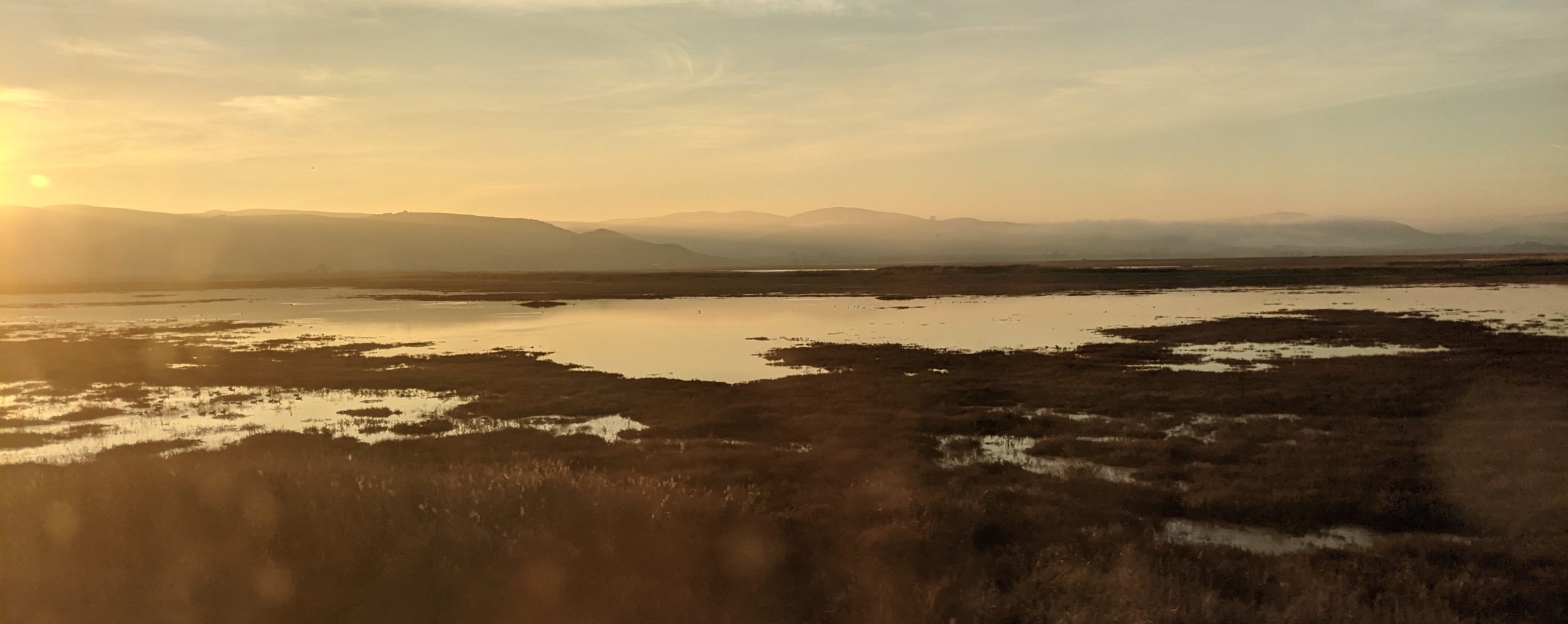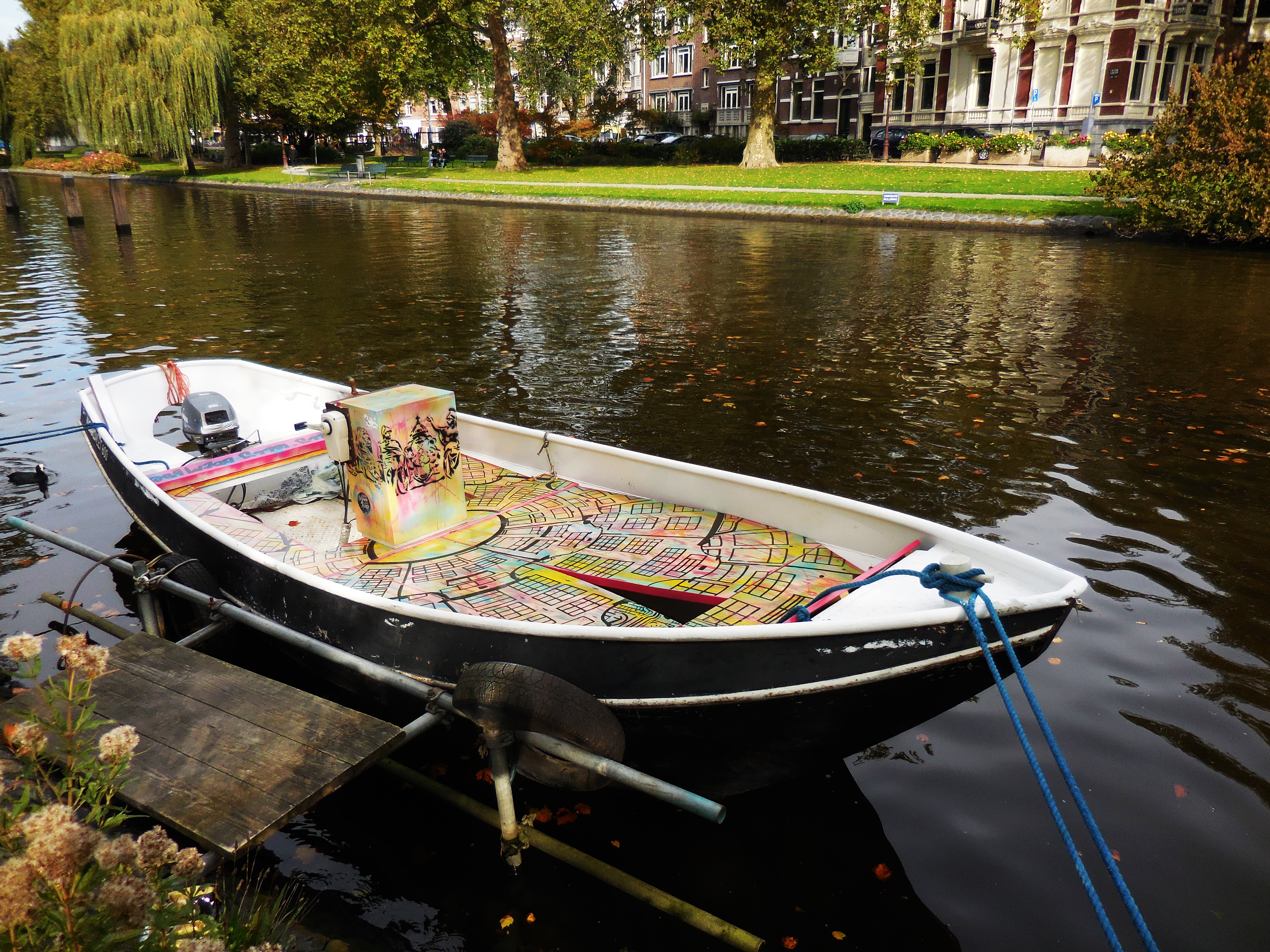I’m writing while sick, which is hopefully only my body telling me “eating a bunch of different foods in 5 hours that you haven’t eaten in a month and a half wasn’t your best idea”, and not something more insidious.*
As with the Paris post, there are a lot of things to cover for a city I’m not supposed to be covering, so I’ll make a list again (in no particular order)!
- Our hostel. We’re staying in the Stayokay Zeeberg, which is perfect in terms of cleanliness, friendliness, safety, and helpfulness. The common areas are the nicest that I’ve ever seen in a hostel. However, I’m not sure if I’d stay here if I was by myself—the layout makes it perfect for school groups (of which there are many, including us, though we’re a bit older than the average) but difficult to make friends, and it’s far enough from the city centre that you’d need to either rent a bike or use the tram.
- Biking here is amazing; there are bike lanes everywhere (most of them are either red-coloured or have a bike sign)! I was wild and free, zooming down the streets, laughing with the wind. Coming from Boston/Cambridge, it’s strange not feeling like I’m about to be killed every time I get on a bike. Besides that and the canals (and preponderance of “coffee shops”), though, it felt oddly familiar, like a homecoming to a place I’d never before been. Amsterdam might be the most Cambridge-like city I’ve ever encountered (including cities in the US).
- Cold, fresh air. Were I not coming from Rabat, I would’ve have even noticed this. But being here made me realize that I miss autumn; it’s nice to have a break the same weather all the time—no matter how perfect said same weather is. The cold air made me feel alive.
- Walking alone. Or biking alone. After having spent a few days with the group/my friends, I finally went off by myself, and it was glorious. While I like Rabat very much (see next post), it’s a nice change to not stand out, to go into a café and not have everyone stare at you, because you look like you belong. Granted, I don’t necessarily look like a local here, but at least I could be (am) European. It was also nice to wander the streets alone without fear, at a leisurely pace, to bike in random directions and take in the air. I was surprised how much of Amsterdam actually looked like the pictures—there were canals on canals with picturesque looking boats and cobbled streets. Perk #1 of traveling alone: you can bike as fast or as slow as you want. **
- Many of my friends’ host families told them to bring back cheese, as the selection in Morocco is generally limited to La Vache Qui Rit. Due to the amazingness of Moroccan food, I don’t actively miss cheese too often, but I was still thrilled to walk into a cheese store with free sample for every cheese! And then I visited the Cheese Museum, which was basically the same thing, but with bigger cheese samples and a photo booth (and I guess some information). My favourite was infused with pesto. There was also a bright blue one, dyed with blueberries and infused with lavender.
- Meal Stipends. I love when programs have meal stipends, because it means that for me, the ticketed price of the program will be that much less than the actual price. Amsterdam isn’t Paris— relatively cheap (and organic!) food is fairly easy to come by. Perk #2 of traveling alone: I can eat what I want, and I can eat as cheap as I want. I ended up spending most of my stipends on cheap food, even though we got 10 euro stipends per meal; it seems that any city in the world I travel to, I end up going back to my primordial comfort foods of falafel and roti and bread and cheese (and everyone knows that you’re not going to get the best versions of these foods (or any?) in fancy restaurants…).
- Church in Attic. I visited the Rijksmuseum, which was everything I expected (I remember, in my sophomore year of high school, getting excited seeing just one small Rembrandt painting, and there were a bunch here; it was rather overwhelming). However, my favourite site that I visited was a house in the Red Light District whose attic had been converted into a Catholic church in the 17th century, when the Reform church pushed other religions and Christian denominations underground. The whole house had been preserved from the 17th-19th centuries and included an audio tour that hit the sweet spot of audiotours—it was long enough to explain a bunch of history, short enough to bore no one, and included extra buttons for extra information. The church was so cool—these people had a mini pipe organ in their attic! Plus it was in a beautiful location, but so is anything near a canal, with all the old houses.
- Perk #3 of traveling alone: you get to go to places that the rest of the group isn’t interested in (although I don’t see why anyone wouldn’t be interested in a zoo of microbes…). This is only a two-story museum, but I could’ve easily spent three hours here. It ranges from the expected—watching volvoxes with a microscope, looking at petri dishes with bacteria from various household objects—to the weird—holograms, cutter ants, a wall full of poop, and something that encourages you to kiss a stranger and learn about the bacteria you exchange (Welcome to Amsterdam. Also funny, especially considering this museum is geared towards children, was a sign that said “microsex: size doesn’t matter”).
- Why are we here, anyway? Moroccans from the Rif region have been migrating to the Netherlands since the 1950s and 60s (and evidently even before that, as couscous was introduced here in the 15th-16th century). As we learned in lecture, Moroccans are the most involved Muslim immigrant group in the Netherlands, for good (successful in politics, art, and film) and bad (highest crime rate among immigrant groups). I missed half of our sessions, but through the readings and the sessions I did go to, learned broadly about the history and also the challenges faced by the immigrants, particularly those of later generations, who consider themselves Dutch and are unwillingly “othered”, by both benign references to their heritage, and by both institutionalized racism. To combat this, Moroccan culture is being passed down through classes at mosques and other initiatives funded by the Moroccan government. If your parent is Moroccan (or even your great-great grandparent), then you, too, have Moroccan citizenship, so you have a duty to the Moroccan government and in turn the government has a duty to you. The language and religion lessons are also available to non-Moroccans. Again, though, there’s still some tension between these policies and the people—as most of the Moroccans in the Netherlands are from the Rif, few of them speak Arabic (darija or MSA, the latter of which no one actually speaks) at home, so children going to these schools can face issues for having no background in the language that they’re expected to know.
* Unfortunately, it was indeed something insidious-er as I’ve had an awful head cold for the past two days and missed a bunch of class; as such, this is not my most eloquent effort, posted to placate all of you who’ve been asking “ZOMG WHAT NETHERLAND Y U NO POST BLOGZ??!!?!?” Okay, maybe not with so much enthusiasm.
**A disclaimer about “perks of traveling alone”. My friends on this program are indeed great and a lot of fun to both be around and travel with. Indeed, as you’ll see in my next post, I am not (very) misanthropic. Oh! and I saw the wonderful Melissa Bain from high school (4 hours at a café was not nearly enough time) who told me to give her a shoutout in this post.

